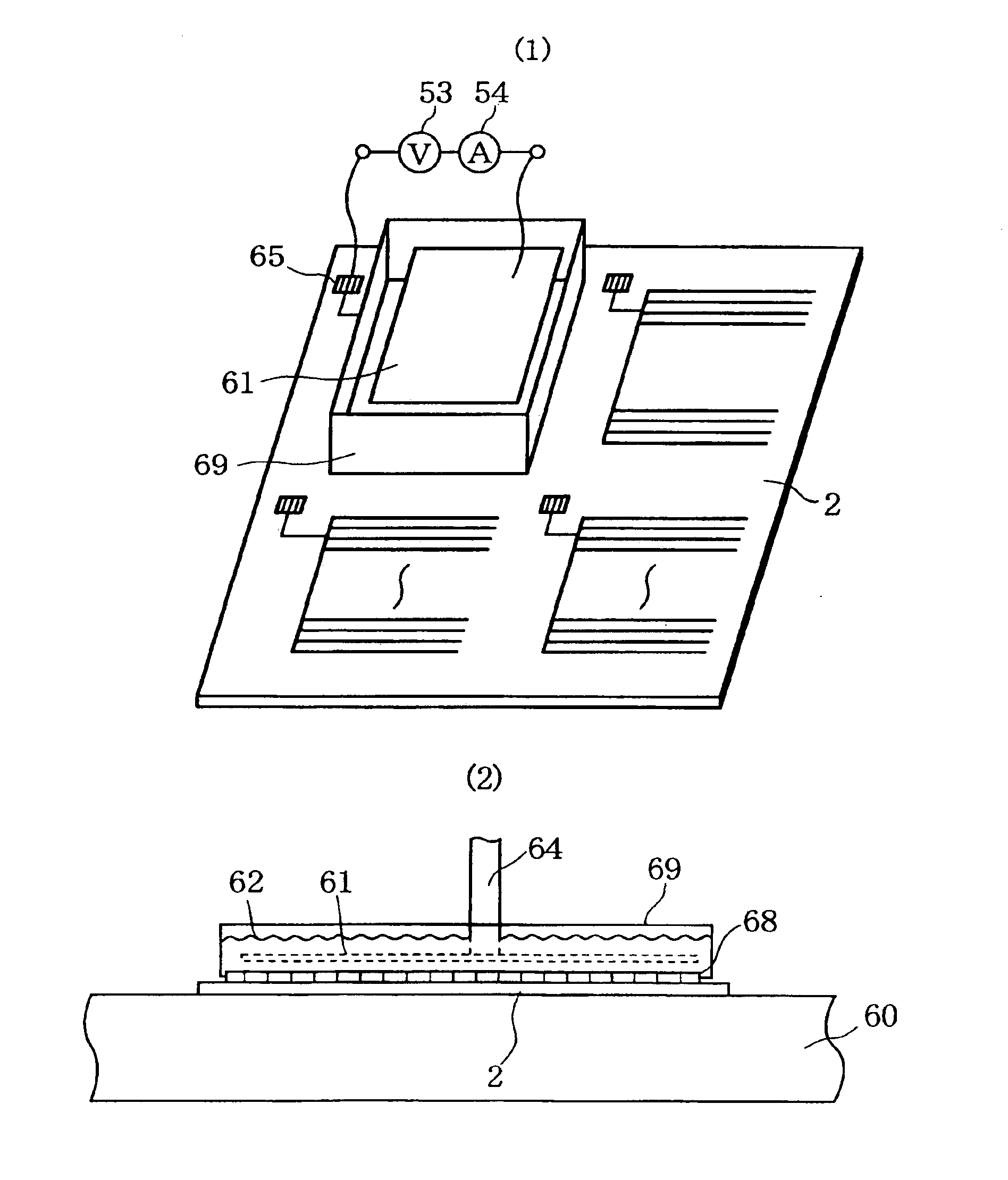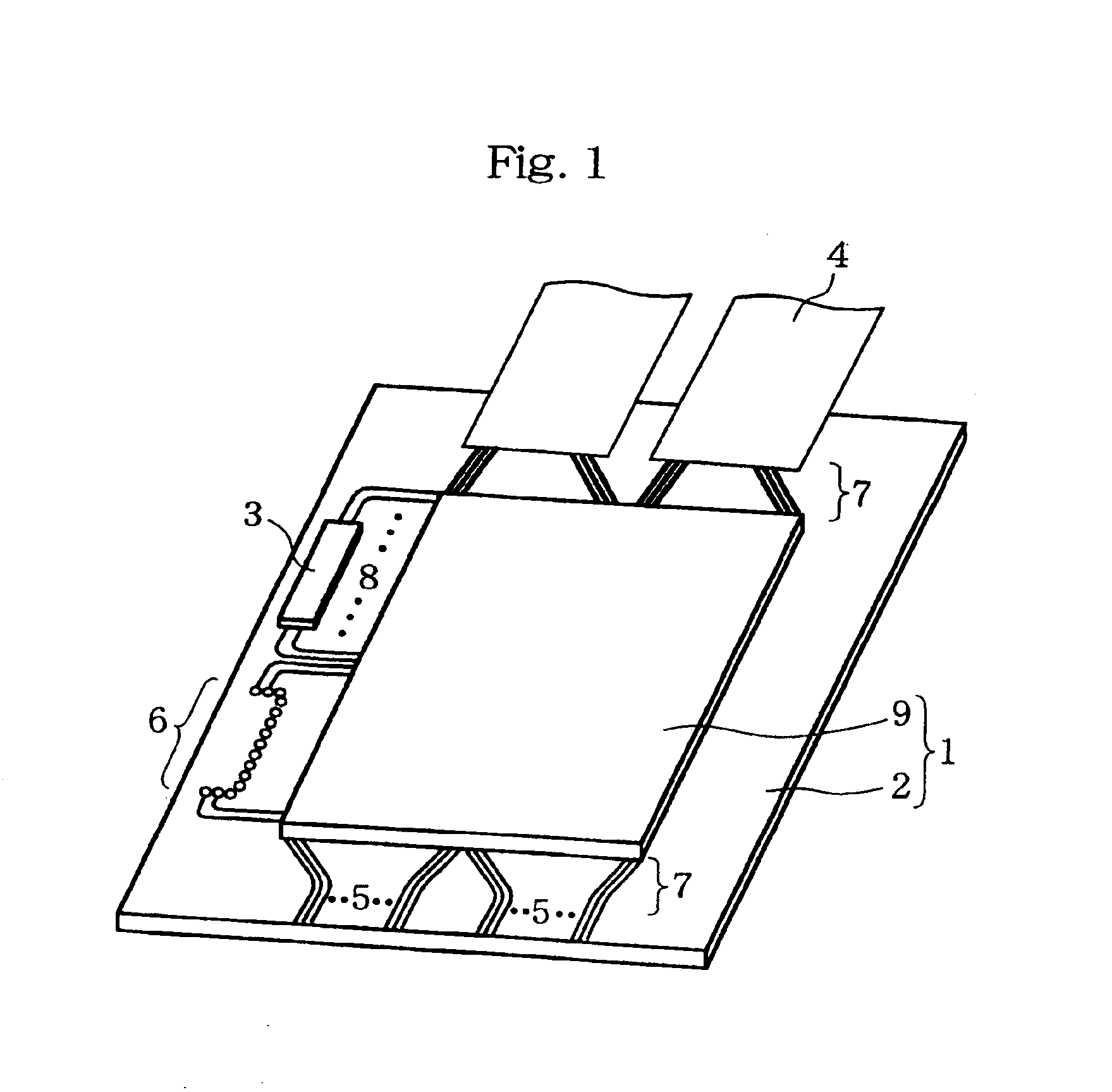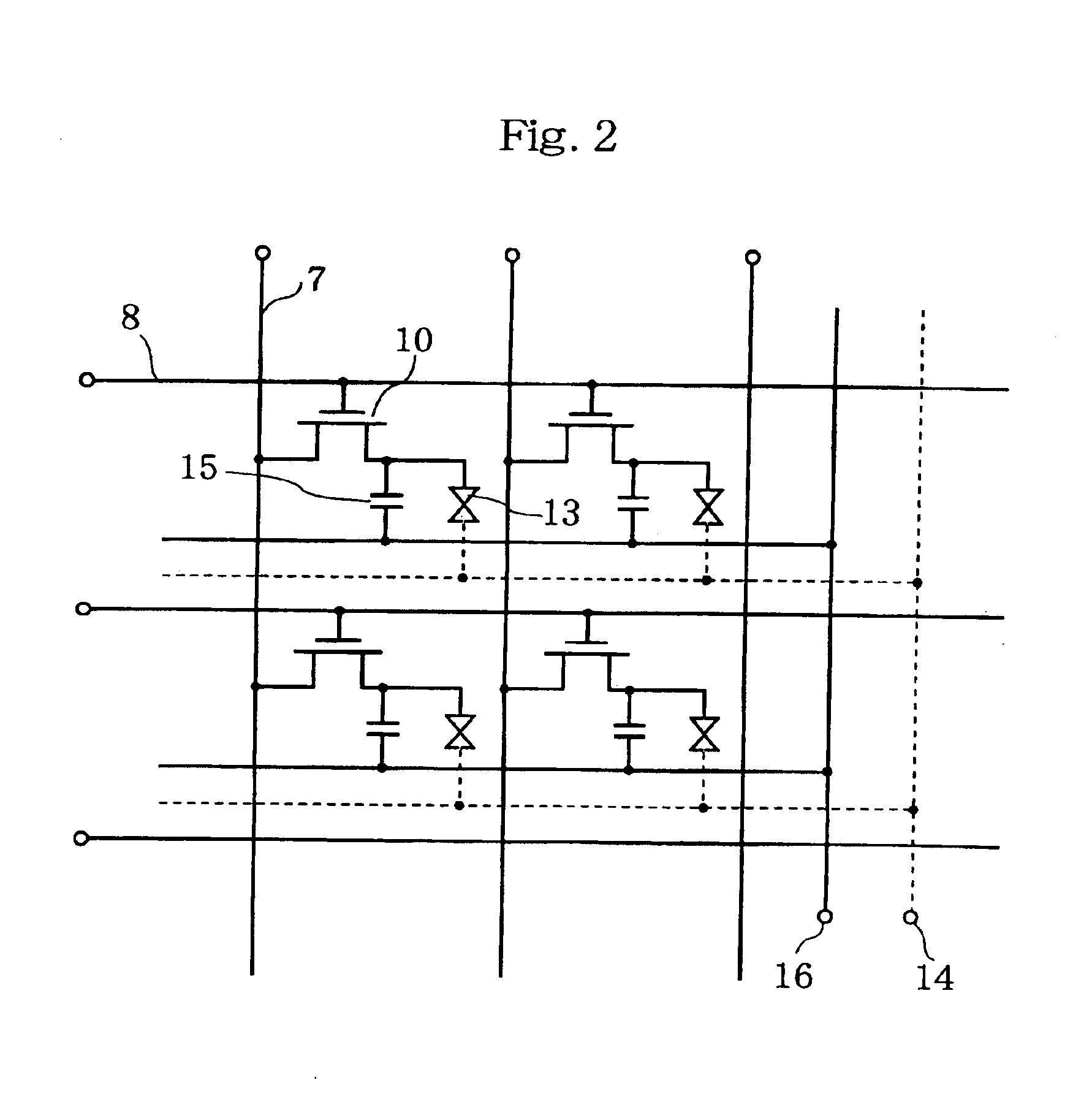Inspection and repair of active type substrate
a liquid crystal device and active type technology, applied in the direction of liquid/fluent solid measurement, surface reaction electrolytic coating, electrochemical machining apparatus, etc., can solve the problems of performance index, channel etch type has a production capacity problem, display image persistence, etc., to achieve easy restoration to its sound condition, increase the insulating characteristics of the polyimide layer 71, and delay the appearance of abnormalities in displayed images
- Summary
- Abstract
- Description
- Claims
- Application Information
AI Technical Summary
Benefits of technology
Problems solved by technology
Method used
Image
Examples
first embodiment
(First Embodiment)
A first embodiment of the invention will be described with particular reference to FIG. 11. In FIG. 11, parts and elements corresponding to those of the prior art explained earlier are indicated with the same reference numerals as in the prior art and there is omitted an explanation on them. This is equally applied to other figures and embodiments.
An active substrate 2 is conveyed from the outside of an in-substrate selective electrochemical treatment system or from a substrate storage container within the treatment system by a conveyor means (not shown) such as a robot arm to be installed and horizontally retained on a stage 60. There is a mechanism for holding the substrate 2 by use of vacuum suction. Then, an electrode plate 61 is made to be close to the active substrate 2 and an electrolytic solution 62 such as nitric acid adjusted for example 01 N (normal) is dropped onto a gap between the active substrate 2 and the electrode plate 61. For this purpose, an app...
second embodiment
(Second Embodiment)
A second embodiment is designed such that a sponge impregnated with a chemical solution is adhered to the inner surface of the electrode plate.
In this embodiment, as shown in FIG. 12, a sponge 620 impregnated with a chemical solution is adhered to the inner surface of the electrode plate 61 opposed to the active substrate 2. The chemical solution is confined in a specified region by pressing the electrode plate 61 against the active substrate 2. After completion of the pin hole inspection, the electrode plate 61 is moved away from the active substrate 2 and the chemical solution adhered to the active substrate 2 is recovered and removed. Then, the active substrate 2 is separated from the stage, and taken out of the chemical treatment system after the chemical solution is further removed. It is apparent that the material of the sponge and the material of the member for adhering or fixing the sponge to the electrode plate 61 must be selected taking chemical resistan...
third embodiment
(Third Embodiment)
A third embodiment uses a frame-shaped container.
Reference is made to FIG. 13 for describing the third embodiment of the invention.
First, the active substrate 2 is placed on the stage 60 to be held horizontally there on. Then, a frame-shaped container 69 is pressed against the active substrate 2, the frame-shaped container 69 having an opening slightly larger than the electrode plate 61 at its upper and lower ends and a sealing material 68 embedded at its lower end. Then, the electrode plate 61 is inserted into the frame-shaped container 69 and held in a stationary condition at a position several mm or more apart from the active substrate 2. Subsequently, an appropriate electrolytic solution 62 such as nitric acid 0.1 N is dropped into the frame-shaped container 69. Note that reference numeral 64 designates a supporting bar for holding, lifting and lowering the electrode plate 61. A mechanism for holding, lifting and lowering the frame-shaped container 69 is simple...
PUM
| Property | Measurement | Unit |
|---|---|---|
| length | aaaaa | aaaaa |
| thickness | aaaaa | aaaaa |
| thickness | aaaaa | aaaaa |
Abstract
Description
Claims
Application Information
 Login to View More
Login to View More - R&D
- Intellectual Property
- Life Sciences
- Materials
- Tech Scout
- Unparalleled Data Quality
- Higher Quality Content
- 60% Fewer Hallucinations
Browse by: Latest US Patents, China's latest patents, Technical Efficacy Thesaurus, Application Domain, Technology Topic, Popular Technical Reports.
© 2025 PatSnap. All rights reserved.Legal|Privacy policy|Modern Slavery Act Transparency Statement|Sitemap|About US| Contact US: help@patsnap.com



